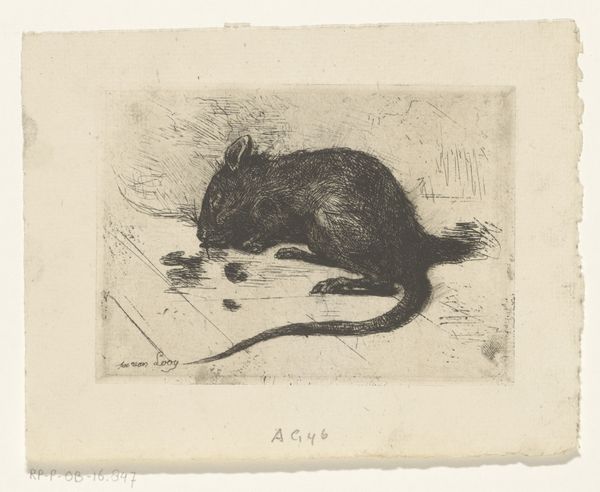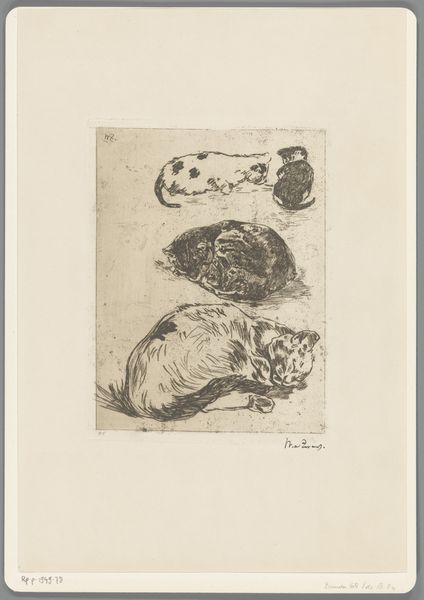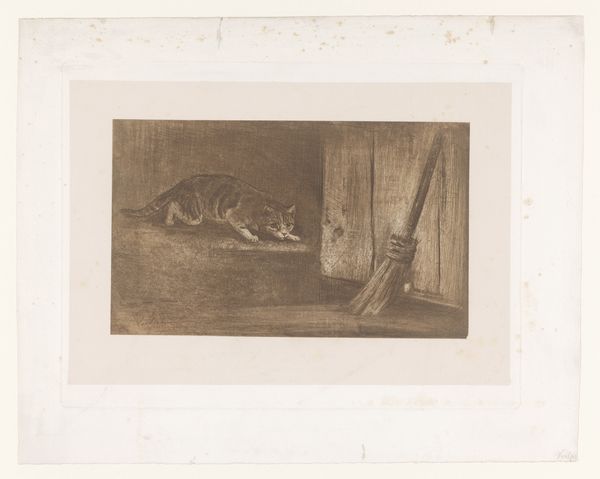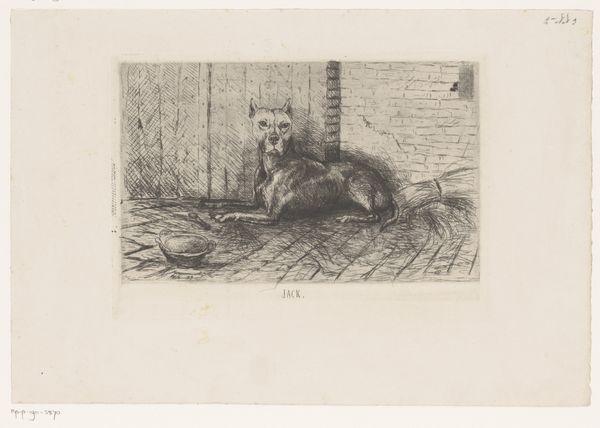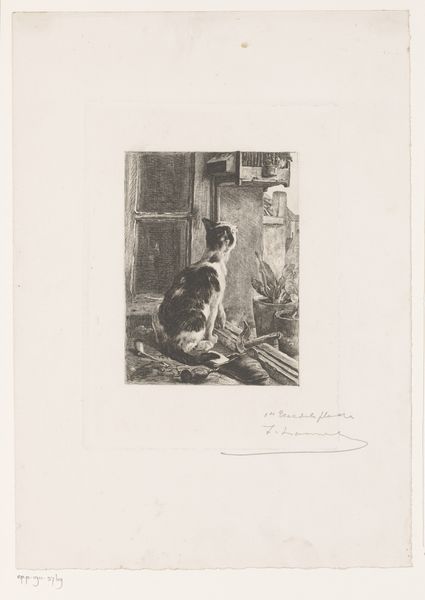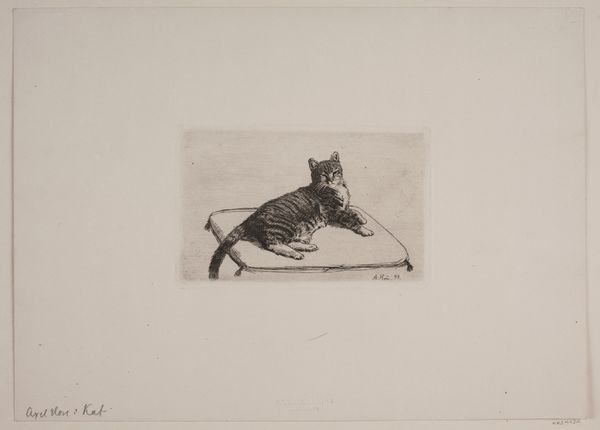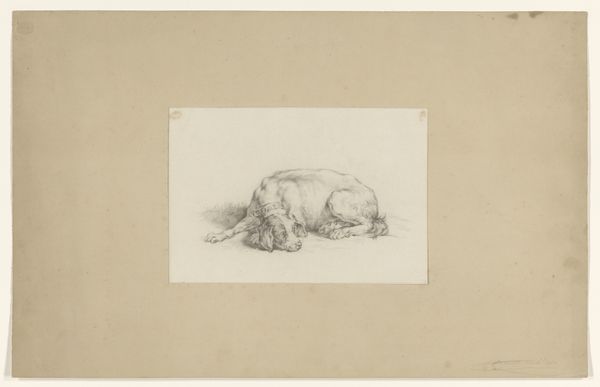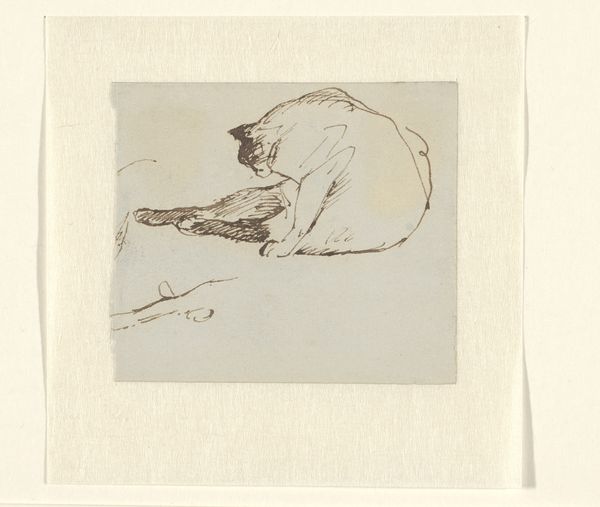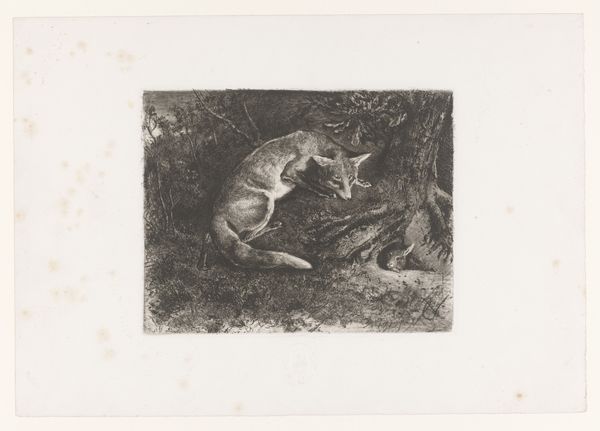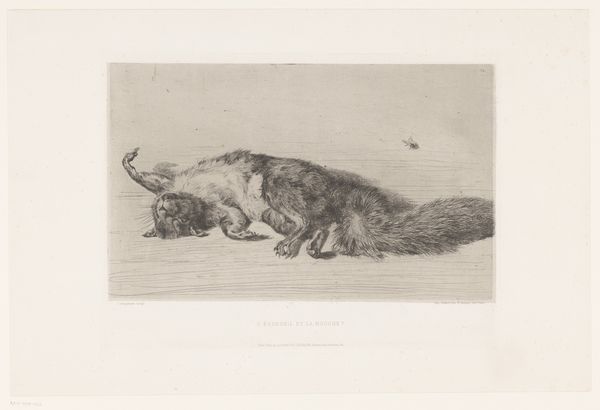
drawing, print, etching
#
drawing
#
animal
# print
#
etching
#
landscape
Dimensions: height 100 mm, width 138 mm
Copyright: Rijks Museum: Open Domain
Editor: This is "Muis," a print and etching by Jac van Looij, dating from 1865 to 1930. It's a simple image, just a mouse. I'm struck by its darkness; it feels quite stark, even unsettling. What do you see in this piece? Curator: Well, it's compelling, isn't it? Immediately, I think about how animals, especially those deemed 'pests' like this mouse, often become symbols loaded with societal anxieties. Consider the context – late 19th, early 20th century. Rapid industrialization, urbanization, and growing disparities created anxieties around hygiene, disease, and the 'other.' How might the mouse embody some of these fears? Editor: I never thought of it that way, more as just a…mouse! But I suppose it's presented kind of sinisterly, huddled over what looks like crumbs. The shadows are deep. Curator: Exactly! The landscape style almost elevates it. Consider how marginalized communities were—and often still are—compared to vermin. Did van Looij intend commentary on class or social standing, equating the forgotten or unwanted with these creatures fighting for scraps? Think about power dynamics embedded in even the simplest depictions of nature. Editor: So, it's not just a drawing of a mouse eating; it's potentially a reflection on social inequalities? A commentary on survival at the margins? Curator: Precisely! Art has the ability to layer meaning onto even the most mundane. Seeing through an intersectional lens is the only way we are to see what art can be; the historical narrative behind the work adds context. It can make art so much richer. Editor: I’ll never look at a mouse the same way again! Thanks for opening my eyes. Curator: Likewise! This constant interrogation and consideration is the beauty of art!
Comments
No comments
Be the first to comment and join the conversation on the ultimate creative platform.
